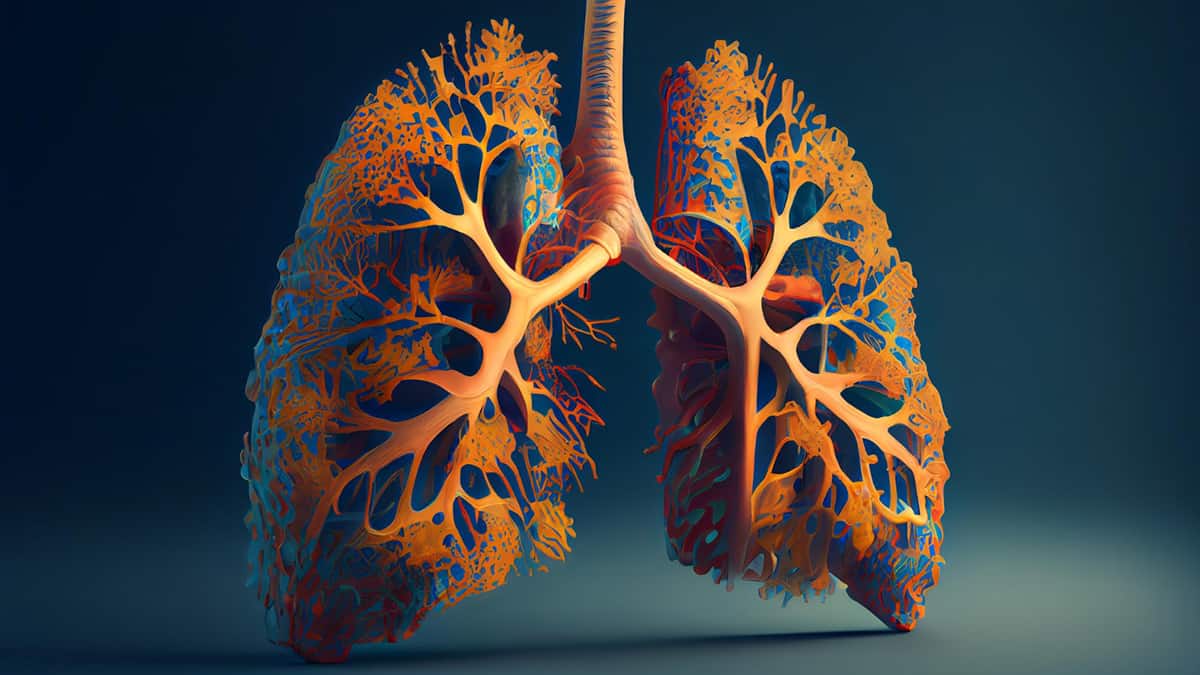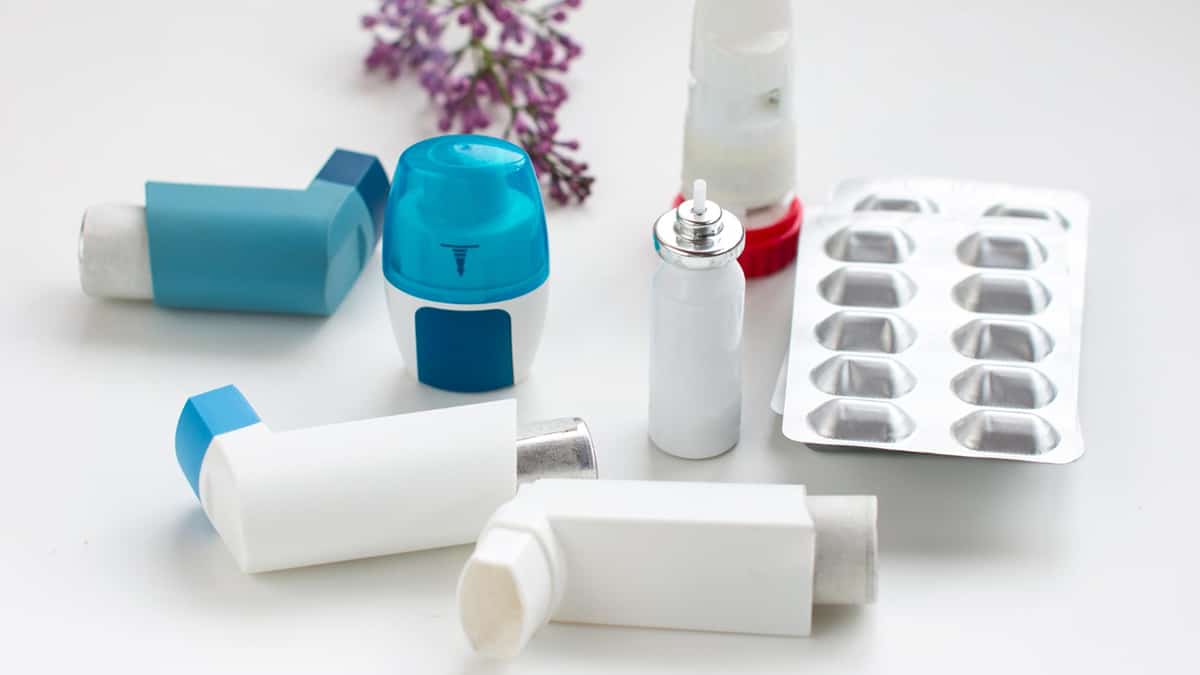Understanding Asthma and COPD: What’s The Difference?
Physical Health

Asthma and chronic obstructive pulmonary disease (COPD) are both conditions that affect the lungs and airways (the tubes that connect the lungs to the mouth). They can both cause some of the same symptoms, such as shortness of breath, so some people with breathing difficulties may be unsure which of the conditions they may have.
However, asthma and COPD tend to affect different groups of people, have different causes, and require different treatments. To further complicate matters, the two disorders can occur together at the same time. If you are experiencing new or worsening chest or breathing symptoms, talk to your doctor to help determine whether you may have asthma or COPD.
What Is Asthma?
Asthma is a disease that typically starts during childhood. It leads to swelling in the airways. About one in 13 people has asthma within the U.S.
What Is COPD?
Chronic obstructive pulmonary disease is a serious lung condition. It frequently leads to disability (an inability to perform certain tasks or activities) and is one of the most common causes of death in the United States. About 15 million U.S. adults are living with the condition.
There are two main types of COPD. Emphysema affects the tiny air sacs within the lungs. The air sacs become damaged, and can’t inflate like they should, as the tiny air sacs rupture and create one large air pocket instead of multiple smaller ones. The other form of COPD, chronic bronchitis, occurs when the airways become inflamed and produce too much mucus. Emphysema and chronic bronchitis often occur at the same time.
Asthma-COPD Overlap Syndrome (ACOS)
About 20% of people diagnosed with COPD also have a history of asthma. When both of these conditions occur at the same time, it is called ACOS. People with this condition experience the same symptoms seen in asthma and COPD and may need to use a mixture of treatments designed to help both diseases.
Symptoms in Asthma vs. COPD
Asthma and COPD both lead to similar symptoms, including:
- Coughing
- Wheezing (a whistling or squeaking sound when you breathe)
- A feeling of tightness in the chest
- Shortness of breath (a feeling of breathlessness or difficulty taking in a deep breath)
However, symptoms for each condition may look different over time. When these symptoms appear and how they change may provide clues as to which condition you may be experiencing.
Asthma Symptoms and Asthma Attacks
Asthma symptoms don’t usually stay consistent — they can come and go. They may get worse and then better from day to day, or even from hour to hour. Many people find that signs of asthma are worse in the morning and at night.
Asthma symptoms can also suddenly get worse during an asthma attack. During this time, you may also experience symptoms like irritability, nervousness, or feeling on edge. Factors like infections, exercise, pollen, chemicals, or cold air can trigger an asthma attack.
If asthma symptoms get very severe — your lips or fingertips are turning blue, you are hunched over and can’t straighten up, you are feeling confused, or you can’t communicate — it may be an emergency. Seek medical care right away.
COPD Exacerbations
COPD symptoms tend to follow a different pattern than do asthma symptoms. You may not have any symptoms at first, or they may be very mild. Symptoms tend to grow worse over time as the condition progresses.
People with COPD also experience episodes in which symptoms get worse, called COPD exacerbations. These flare-ups are mainly brought on by things like bacteria, viruses, and pollution, which can all trigger inflammation in the airways. Other factors like cold air or certain smells may also lead to an exacerbation.
Causes and Risk Factors of Asthma and COPD

These two conditions each tend to be caused by different things. They also are more likely to affect different types of people.
What Causes Asthma?
Experts don’t fully understand why asthma develops. The condition occurs when an inhaled substance such as bacteria or pollen triggers an unusual immune system response. While your immune system normally helps keep you safe from infections, it responds too strongly in people with asthma, causing swelling in the airways.
People with certain risk factors are more likely to have asthma. In children, boys are more likely to develop the condition than are girls. However, teen and adult women have asthma at higher rates than men. This condition is also more likely if you:
- Are Black or Puerto Rican
- Have allergies to pollen, mold, dust, pets, food, or other substances
- Are obese
- Work with chemicals that have fumes or form dusts
- Live in an area with a lot of air pollution
- Are exposed to a lot of cigarette smoke
- Have a mother or other close family member who is diagnosed with asthma
It’s not possible to completely prevent asthma. The condition most often develops in children as their immune systems are still forming. However, avoiding potential triggers like mold and air pollution may reduce the risk of asthma developing in you or your children.
What Causes COPD?
Most cases of COPD are caused by tobacco smoke. As many as three out of four people with COPD currently smoke or formerly smoked. Secondhand smoke can also lead to COPD.
Cigarettes are not the only cause of this condition. Many people with COPD have never smoked. Other irritants can also increase risk of COPD when they are inhaled, such as air pollution, chemical fumes, chemical dusts, and cooking fumes.
COPD is more likely to happen in certain groups of people. You are more likely to experience this condition if you:
- Are at least 65 years old
- Have Native American, Alaska Native, or multiracial (but not Hispanic) ethnicity
- Are divorced, separated, or widowed
- Are unemployed or retired
- Haven’t completed high school
- Have been diagnosed with an infection like tuberculosis or HIV
- Have a family history of COPD
- Have asthma
Finally, most people are diagnosed with COPD when they are older. People under the age of 40 rarely develop the condition.
How Do You Know If You Have Asthma or COPD?

It’s important to get annual physical exams in order to monitor multiple aspects of your health over time, including your lung health. Make sure to tell your doctor about your current and past smoking habits so they can recommend any screenings or tests that can help identify potential breathing problems. You should also mention any ongoing or worsening symptoms such as coughing, wheezing, or abnormal feelings in the chest.
Asthma, COPD, and other breathing problems can be diagnosed with tools such as:
- Spirometry, which helps measure how much air you can exhale and how fast you can breathe air out
- Other lung function tests, such as a peak expiratory flow test, which measures how much air you are capable of breathing out
- A fractional exhaled nitric oxide (FeNO) test, which can detect inflammation in the lungs
- An arterial blood gas test to measure levels of carbon dioxide in your blood
- Tests to measure whether your airways have a reaction to allergens or other possible triggers
- Skin tests or blood tests to identify allergies
Your doctor may also recommend imaging tests such as a chest X-ray or CT scan in order to see inside your lungs. These tests can detect a variety of problems, such as pneumonia, fluid around the lungs, scarring in the lungs, or tumors.
Treating Asthma and COPD
Some treatments are used for people with both asthma and COPD. These therapies can help support optimal lung health.
Quitting Smoking
If you currently smoke cigarettes, quitting smoking is the most important step you can take to improve your lung health and prevent your lung condition from getting worse.
Many people need support while quitting smoking. Check with your workplace or a local hospital to see if they have programs to help you stop. You can also try various smartphone apps or programs from the American Lung Association or the National Institutes of Health.
Lifestyle Changes
In addition to cigarette smoke, it’s also important to avoid other substances that could harm the lungs. If you work with chemicals, make sure to follow proper safety procedures and wear the correct personal protective equipment (PPE). This may help you avoid being exposed to chemicals that could make your lung function worse.
Getting exercise is also essential for building up lung strength. Talk to your doctor to learn more about what level of physical activity is safe for your health and how to know when you’re exercising too hard.
Pulmonary Rehabilitation
This type of treatment teaches you how to make personalized lifestyle changes that could improve your overall well-being while living with asthma or COPD. For example, a pulmonary rehabilitation program may help you:
- Learn how to breathe more easily
- Gain strength and conserve energy to lessen the burden on your lungs
- More easily perform daily tasks
- Make better diet choices to support your lung health
- Exercise in a safe way
- Lessen anxiety or depression
Avoiding Infections
If you have asthma or COPD, your body may have a harder time fighting off respiratory infections that affect the lungs and airways. It’s important to do what you can to prevent infections that could have a major impact on your health.
Vaccination is thought to be one of the safest ways to stay healthy and prevent major complications from your asthma or COPD. Experts recommend that people with lung conditions get the following vaccines:
- Influenza vaccine, also called the flu shot, to protect against getting the flu
- Pneumococcal vaccine to fight pneumococcal diseases such as pneumonia and meningitis
- I recommend this vaccine for everyone at age 65 and above and for those 19 or older who have asthma, COPD or other chronic health conditions like diabetes, heart disease or kidney failure.
- Tdap vaccine, which protects against tetanus, diphtheria, and whooping cough
- Zoster vaccine to help prevent shingles
Another great way to prevent infections is to wash your hands before cooking, eating, or touching your face. Additionally, don’t share glasses, eating utensils, or handkerchiefs with other people. Staying away from people who are sick and wearing a face mask can also limit the number of germs you breathe in.
Other Asthma Treatments

People with asthma often use an Asthma Action Plan to help control their condition. This plan helps you recognize when symptoms are getting worse and tells you which treatments to use based on how severe your condition feels. Work with your doctor to create an Action Plan that works best for your needs.
Asthma Medications
Asthma is controlled with a variety of different medications. Some medications provide quick relief when symptoms get severe. Your doctor may give you an inhaler containing a short-acting beta2-agnonists (SABA), corticosteroid, or anticholinergic to help open your airways during an asthma attack.
You may also need to take control medications that work long-term to help reduce symptoms and lessen your chance of experiencing an asthma attack. These medications may include corticosteroids, biologics, mast cell stabilizers, leukotriene modifiers, bronchodilators, or allergy shots.
Surgical Procedures for Asthma
If your asthma is severe and medications don’t seem to help, your doctor may recommend a procedure called a bronchial thermoplasty in which a small tube with a camera at the end is guided into your airways. Your doctor will heat up the muscles that surround your airways in order to help keep these passages open.
Other Treatments for COPD
There are several different types of therapies that can help you cope with COPD. These include medication, oxygen, and surgery.
Medications for COPD
Like asthma, COPD is also treated with both quick-relief drugs that can help when symptoms get more severe and control drugs that are taken on a regular basis.
Many people with this condition use bronchodilators — medications that relax your muscles and help open up your airways. Short-acting bronchodilators, which have effects that last between four and six hours, may be a good fit for people with mild COPD. Moderate or severe cases may require long-acting bronchodilators, which can open up your airways for 12 or more hours.
Your doctor may recommend also taking steroids (medications that reduce inflammation) if you have severe COPD or have frequent symptom flare-ups.
Oxygen Treatments
If you’re not able to breathe in enough oxygen and oxygen levels in your body drop, you may need to use oxygen therapy. During this treatment, you receive oxygen through tubes in your nose, a tube in your windpipe, or a face mask. Your doctor may recommend using oxygen therapy for a short period of time when you are in the hospital or dealing with a COPD exacerbation. You may also need long-term oxygen treatments at home.
Surgical Procedures for COPD
Severe COPD is sometimes treated with surgery. This may be an option for people with COPD who have found that medications aren’t helpful in managing their condition. Types of surgeries include:
- Surgery called a bullectomy to remove large air bubbles in the lungs that can get in the way of normal breathing
- Surgery to place valves in the bronchial tubes (the passages that connect your windpipe to your lungs), which can help remove air from the damaged parts of your lung
- Surgery to remove damaged lung tissue, which may help improve the function of the remaining tissue
- A lung transplant, in which your diseased lung is replaced with a lung from a donor
Living With Lung Conditions
Asthma and COPD can’t be cured, but many treatments can help you reduce symptoms and feel more comfortable. It is important to work with your healthcare team to figure out which lung condition you may have and to develop a treatment plan that keeps your lungs as healthy as possible.